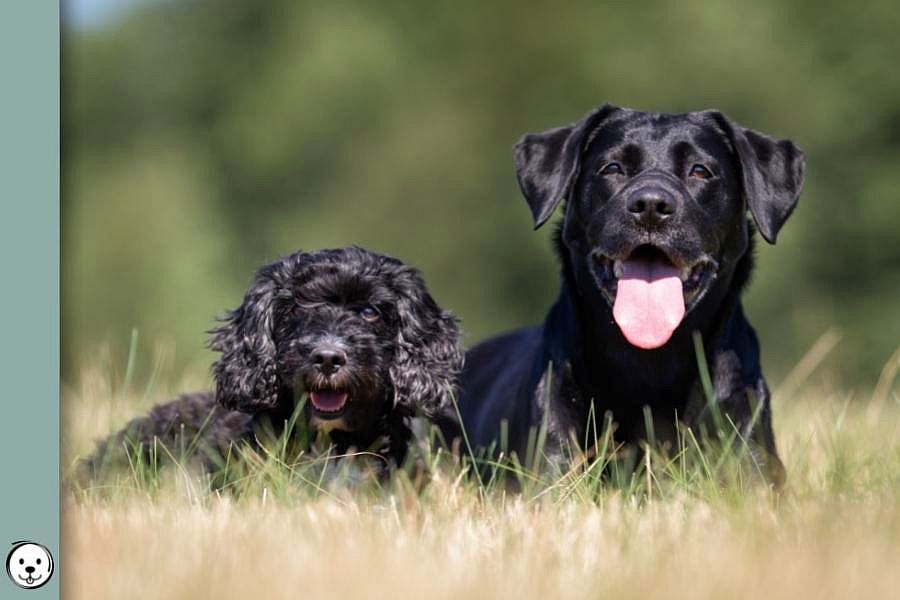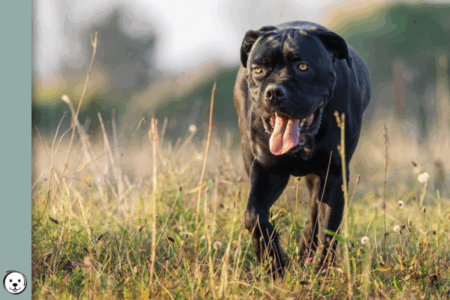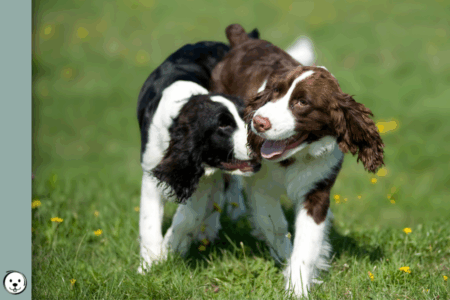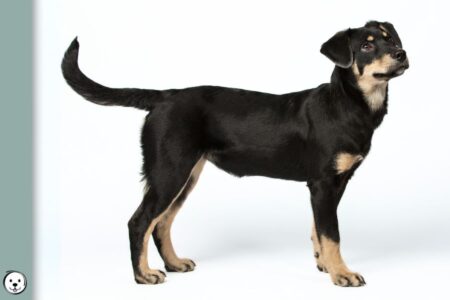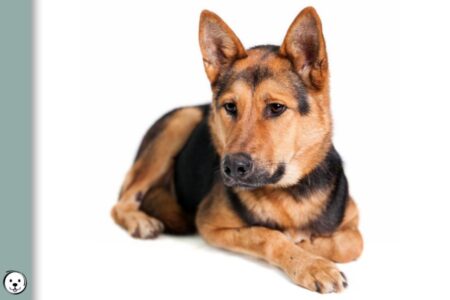The dominant allele at the K-Locus (KB) inhibits the production of phaeomelanin and causes a solid eumelanin-pigmented phenotype in dogs that is commonly called dominant black. Here, we look at the variations and genetics of a dominant black coat in dogs.
What is Dominant Black?
The KB allele at the K-Locus promotes eumelanin synthesis and fully blocks phaeomelanin expression. All pigment cells will produce black pigment. Whatever distribution of yellow a dog should have via its A-Locus (clear sable, agouti, saddle, tan point, etc.) will not be visible.

Example: Did you know that the majority of Labrador Retrievers have a tan point genotype (at/-) but can’t express tan markings because all solid black or chocolate Labs are also KB/KB[2]?
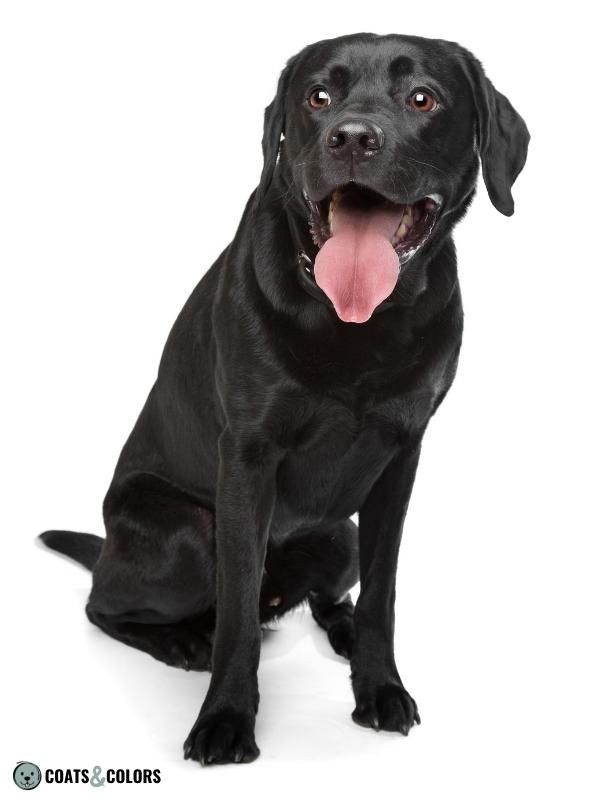
The KB allele causes a solid dark eumelanic coat in all pigmented areas.
By the way, dominant black was named after the default black pigment color in a wild-type coat. But an affected dog can just as well be brown, blue, or lilac since these are all just modified versions of black.
Next to eumelanin base colors, there are many other traits like merle, domino, white spotting, or graying that can alter the colors and color distribution pattern on a dominant black dog.
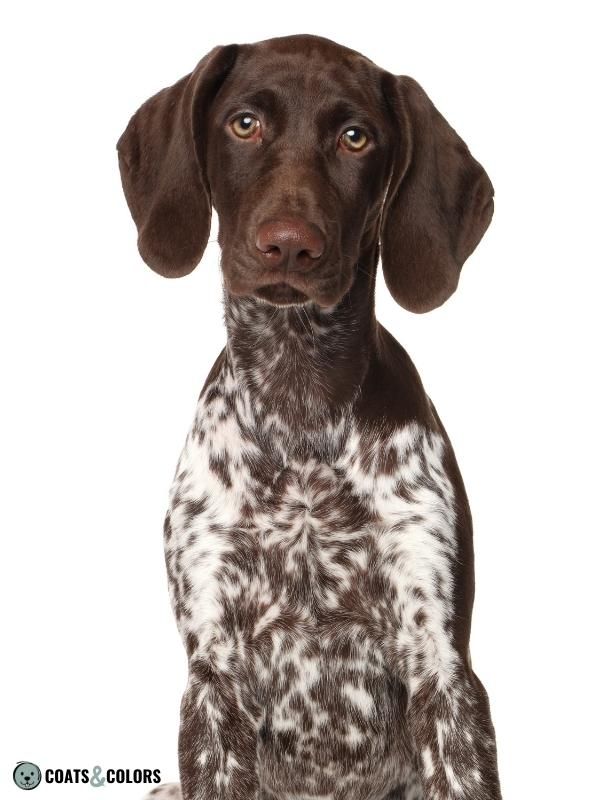
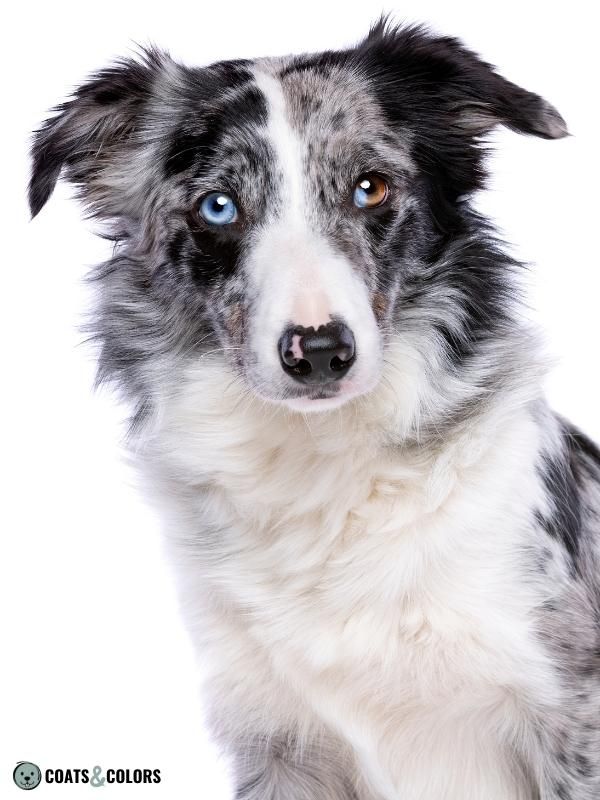
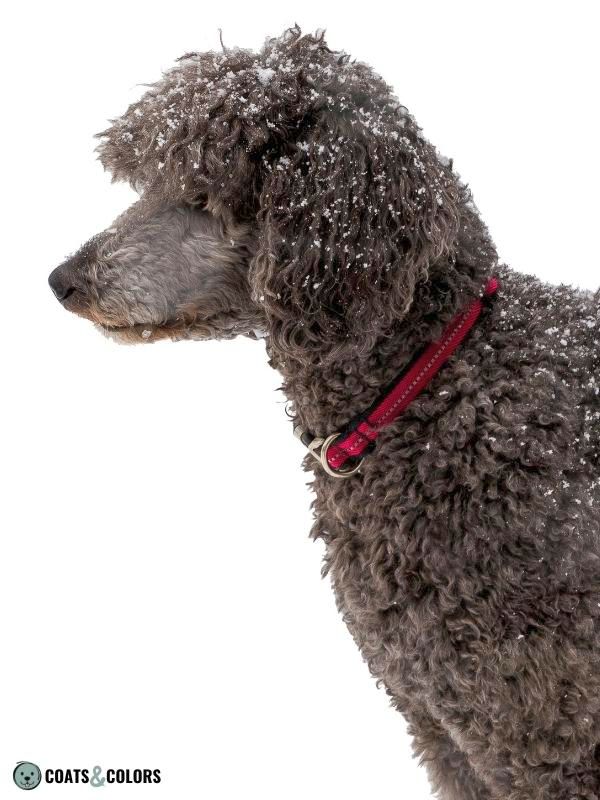
The KB Allele
The K locus in dogs has gained the ability to meddle with pigment type switching several thousand years ago[4]. The dominant KB allele at this gene locus can prohibit agouti gene expression[1].
KBlack or KB is the dominant allele in this series and is responsible for a dominant black solid dark coat. The “partial dominant black” brindle allele kbr enables pattern expression but adds some dark striping. Only ky/ky enables a normally patterned coat with agouti gene expression still fully intact.
Since KB is a dominant trait, one copy is enough to produce a solid dark phenotype.
Dogs with a KB/- genotype can carry brindle (KB/kbr) or normal agouti expression (KB/ky). But a dog that is homozygous dominant (KB/KB) can only produce dominant black puppies.
Dominant black is found in many solid or solid-and-white breeds like Labrador Retrievers, Newfoundland, Weimaraner, Schipperke, Border Collie, Dalmatian, or German Shorthaired Pointer.
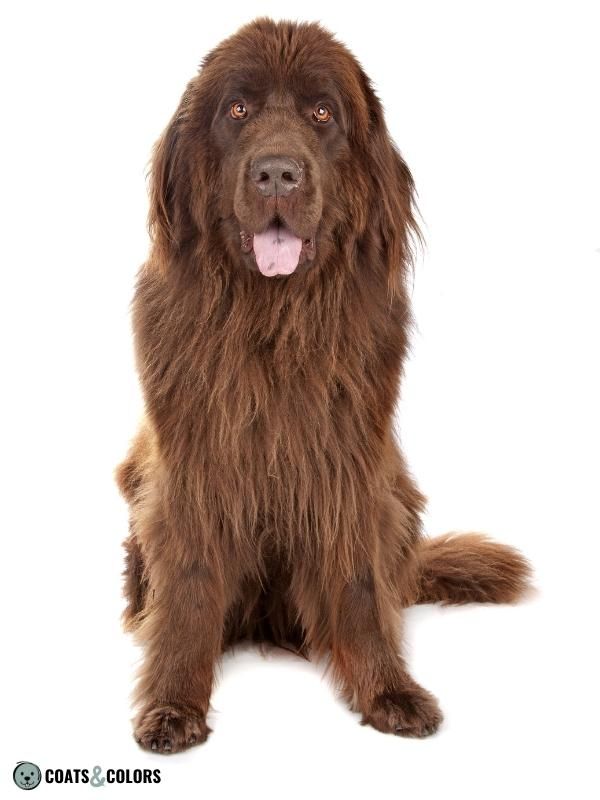
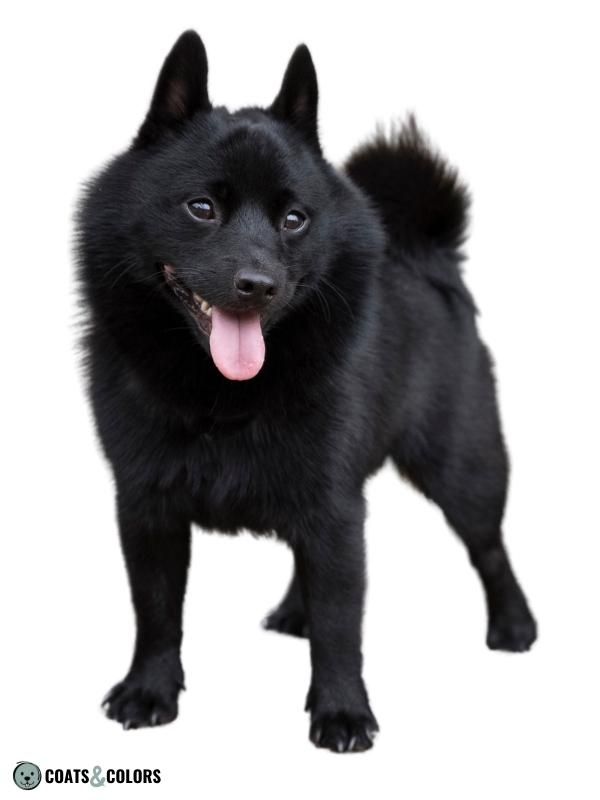
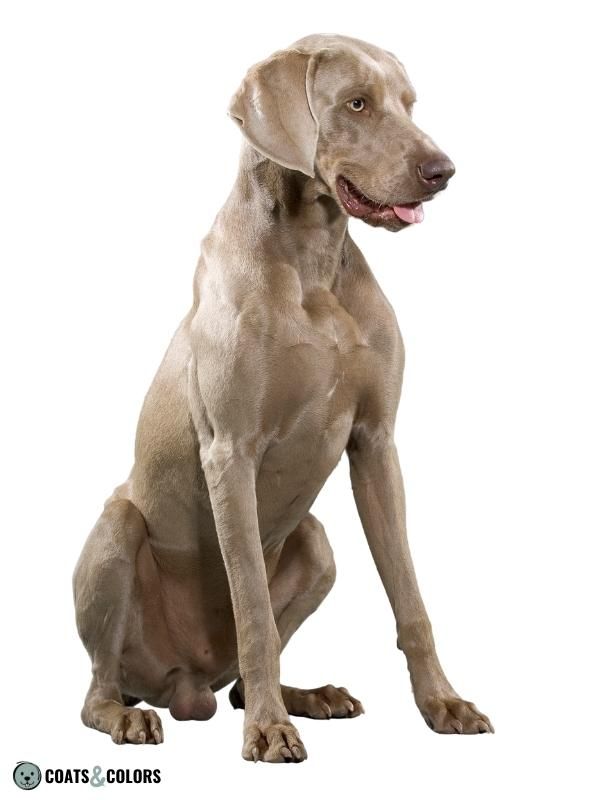
At this point, we should mention that only very few companies offer commercial testing for the kbr allele. Brindle is a structural variant that contains both ky and KB elements on the same chromosome. Brindle is “partial dominant black” which makes it hard for most companies to distinguish between KB and kbr.
Since kbr has combined features from KB and ky it will show up in most tests as KB/ky. So if your dog’s test comes back as KB/ky, it might actually be KB/kbr or even visually brindle due to kbr/kbr, or kbr/ky.
When will a dog be dominant black?
Dominant black causes a solid color in whatever shade of eumelanin a dog can produce in all pigmented areas. But to express a dominant black phenotype, a dog has to be able to produce eumelanin.
- KB is not visible in dogs with extended white markings. Since white spotting inhibits a dog from having pigmented coat, the KB pattern might be partially or fully hidden “under” the white coat.
- A dominant black dog can also never be recessive red (e/e) since these dogs can’t produce eumelanin. The recessive red (e/e) pattern removes the ability to activate eumelanin production.
Example: Most yellow Labradors are e/e KB/KB, they just can’t express dominant black since they can only produce yellow pigment. A Labrador Retriever has to be E/- KB/KB to produce a solid black or brown coat.
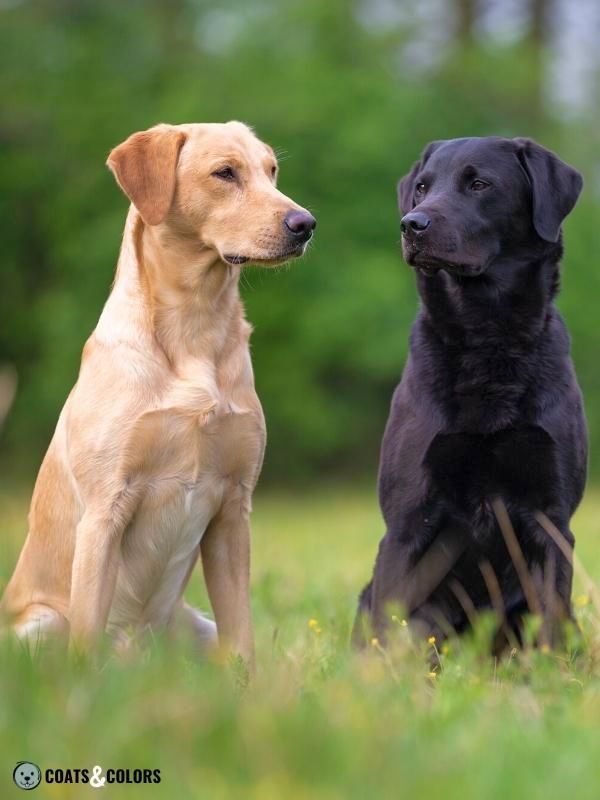
Variability of Dominant Black
Many different genes can cause a variety of phenotypes in dominant black dogs.
KB & Eumelanin Colors
Eumelanin can be black, brown, blue, or lilac, depending on a dog’s genotype at the B-Locus and D-Locus:
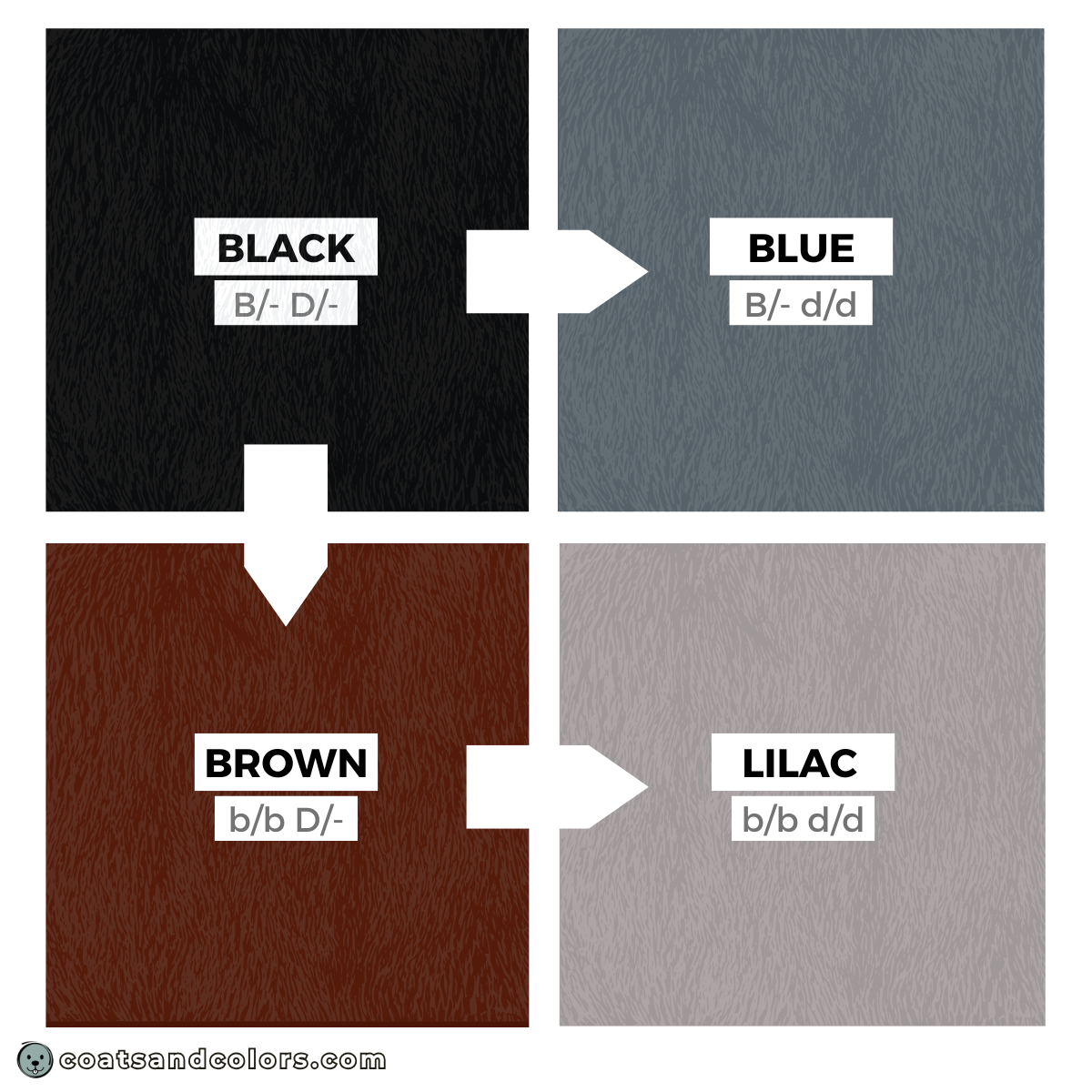
These genes determine the color of all the eumelanin on a dog’s body. They not only turn all the eumelanin in the coat a certain color. They also affect a dog’s nose color, skin color, and even eye color.
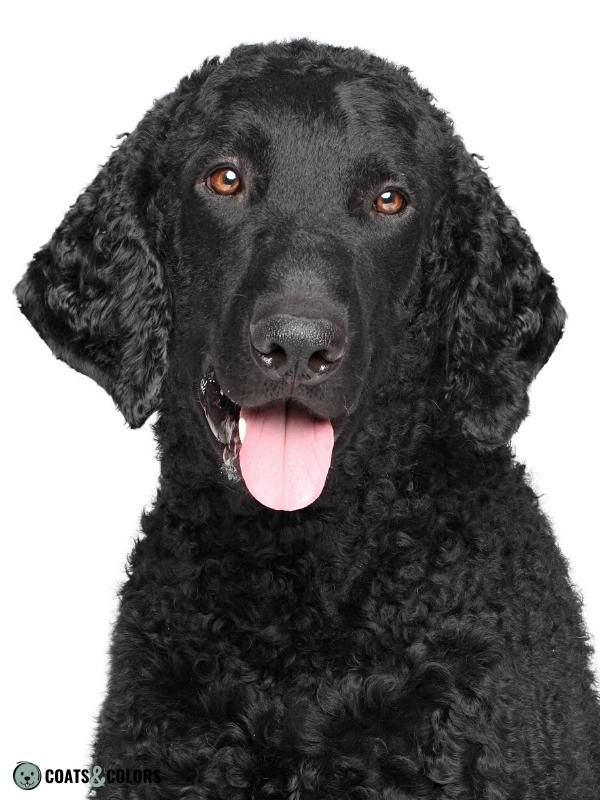
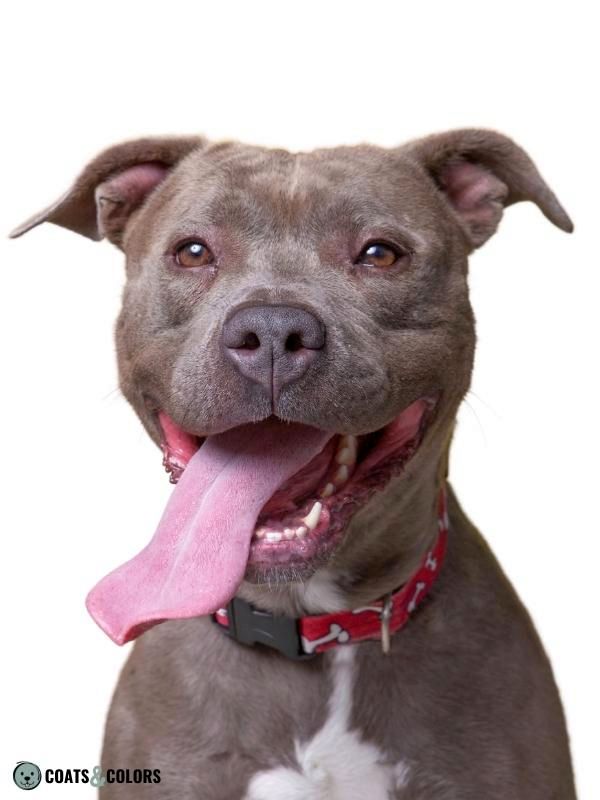
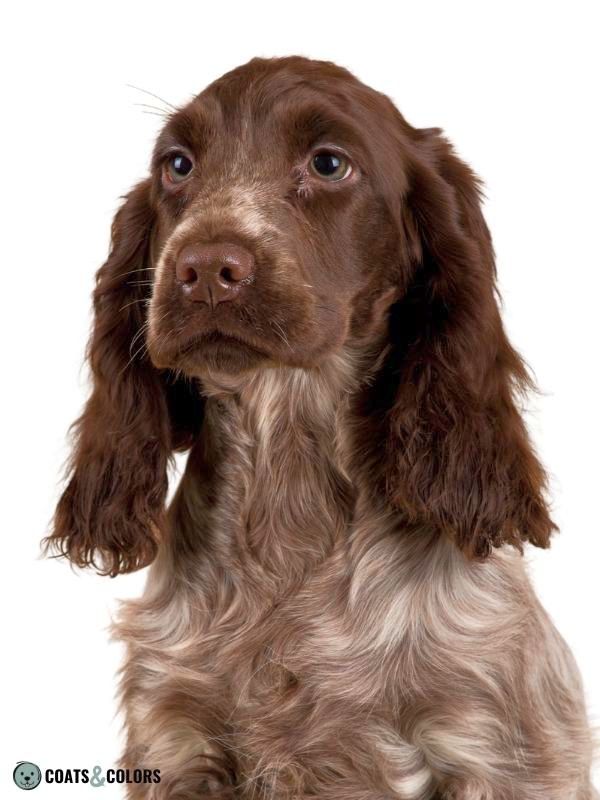
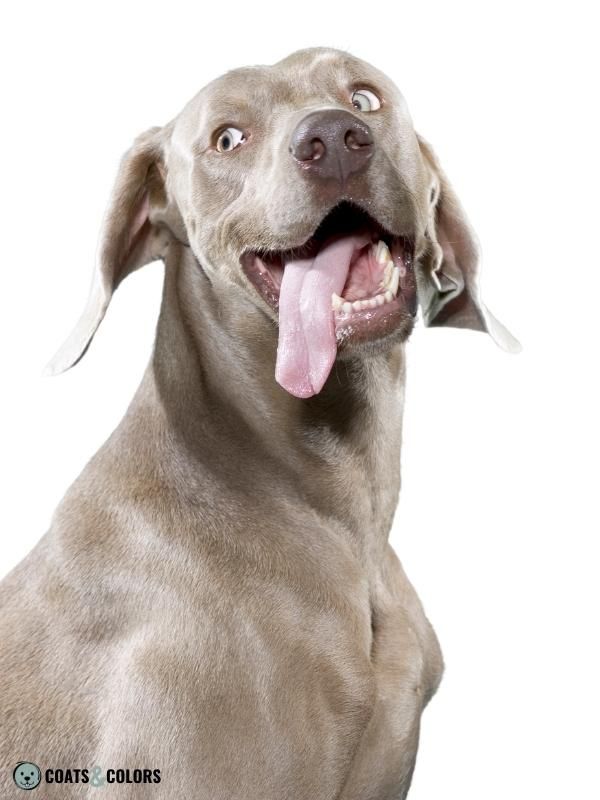
KB & White Spotting
White spotting is caused by a partial or complete lack of pigmentation in some areas of a dog’s coat. White can mask whatever color these areas would normally have had.

Ticking or roan in white areas has the same color the coat would have had without the white markings. So on a dominant black dog, all ticking will have the color of a dog’s eumelanin.
Example: Dalmatians, German Wirehaired Pointer, or English Pointers are basically fixed for KB/ KB[2]. But their solid color is only visible in the spots and patches, while most of the coat is covered by white spotting.
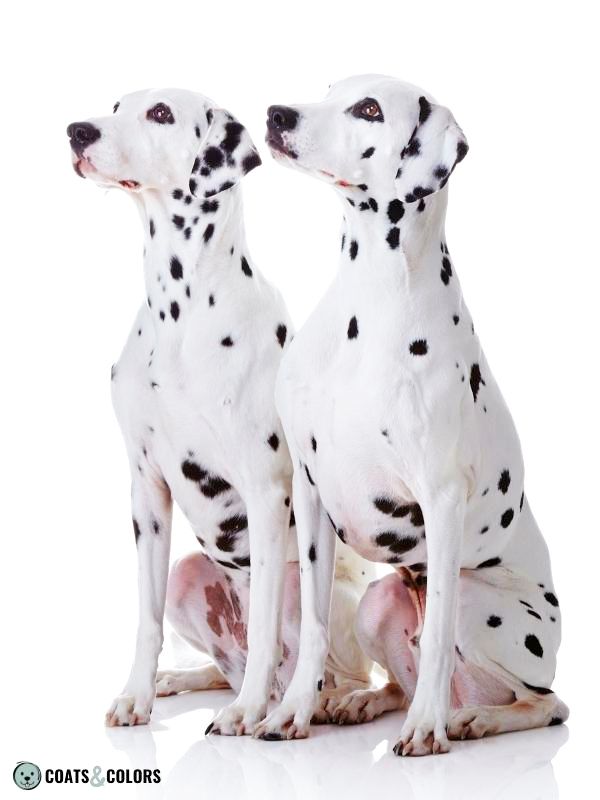
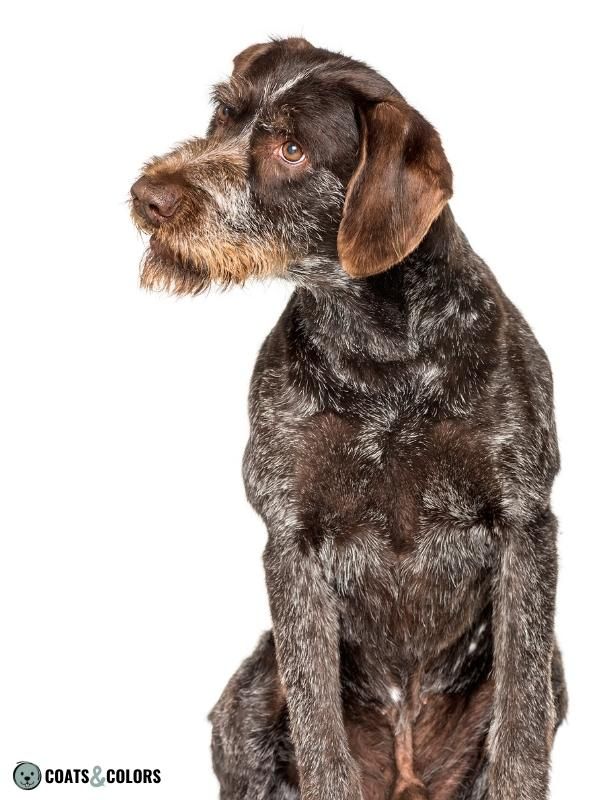
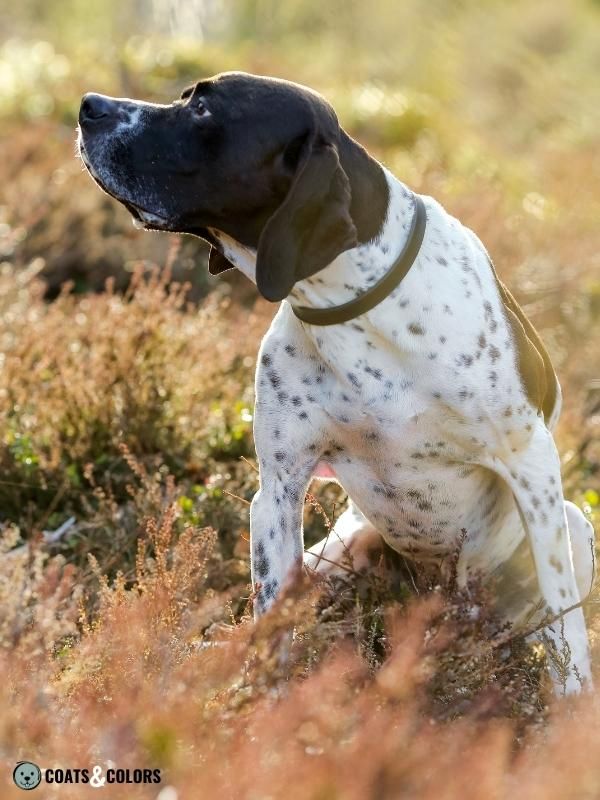
KB & Progressive Graying
The G-Locus can cause fading of eumelanin color in dominant black dogs. It gives the coat an almost multi-colored quality with a color transition from hair roots to hair tips.
Affected puppies are born with their full pigment color. But less and less color will be distributed to the growing hair until the hair is light gray, beige, or even silvery white.
Progressive graying needs long periods of hair growth to take full effect. For some unknown reason, it only affects furnished breeds like Bearded Collies or Poodles.
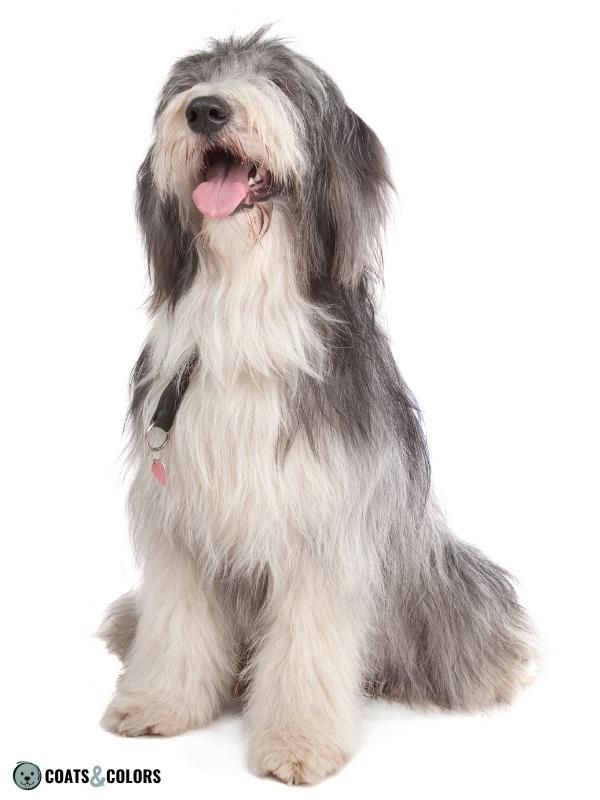

KB & Merle
Merle can delete pigment from any pattern.
This causes a marbled pattern with areas that still have normal pigment, merled areas with partially deleted pigment, and maybe even some white patches with fully deleted pigment. Merle mainly removes eumelanin, so it affects all the pigmented areas in a dominant black coat.
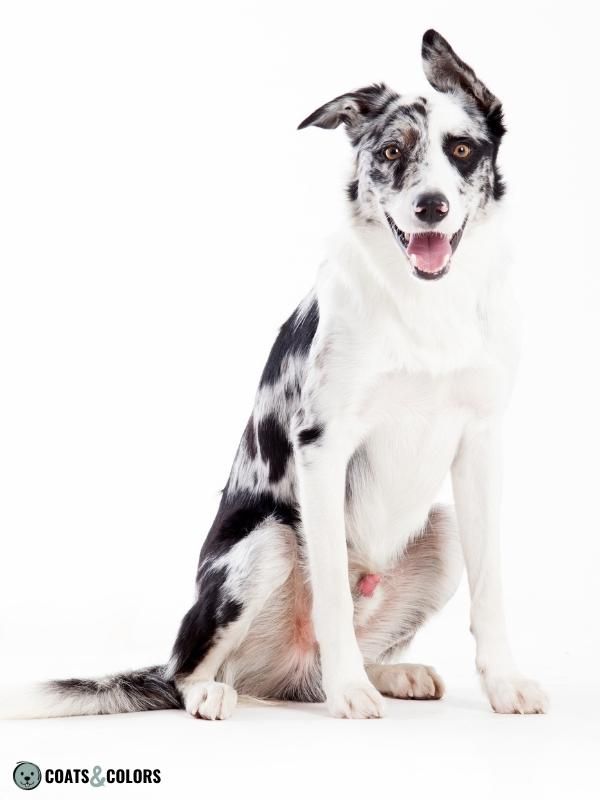
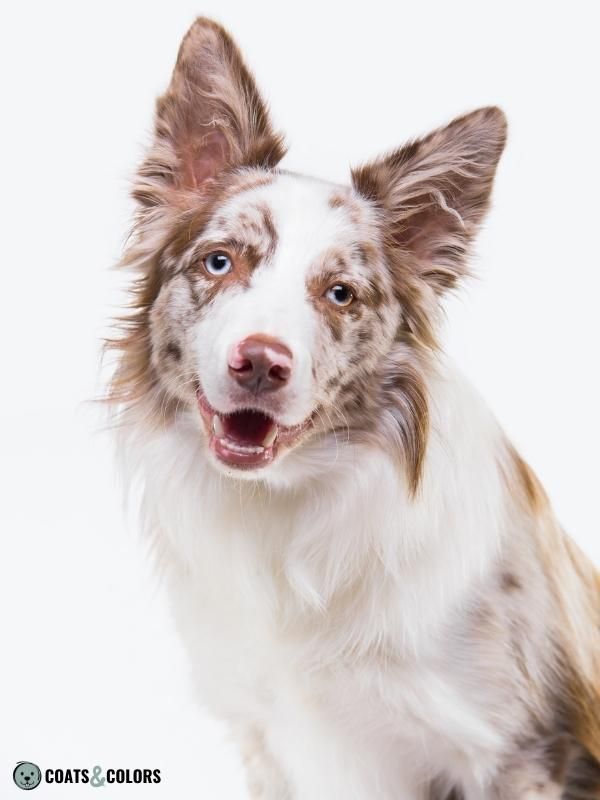
Many breeds with Merle such as Border Collies also have KB since a solid dark coat provides the perfect canvas to produce a loud Merle pattern. And of course, many color-bred dogs combine both of these traits on purpose to produce solid merle bully breeds, poodles, or spaniels .
Great Danes take it one step further and can turn black merle into harlequin. Their unique merle modifier deletes all pigment from merled areas. This gives a white coat with torn black patches.


KB Domino
There are different alleles at the E-Locus (eA, eG and eH) that can cause domino or grizzle patterns.
To put it simply, domino reduces eumelanin production. This can cause a dominant black coat in KB domino dogs to express as weirdly patterned. Or it can give an almost even grayish color.
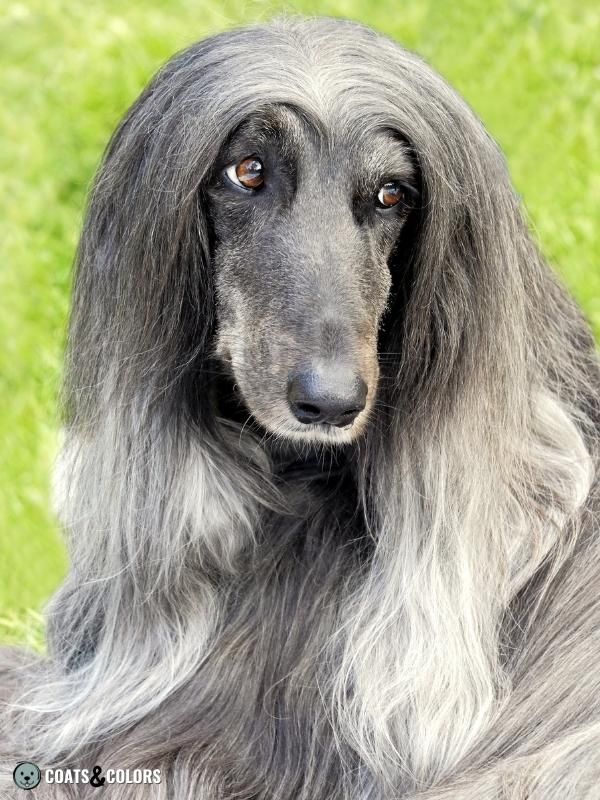
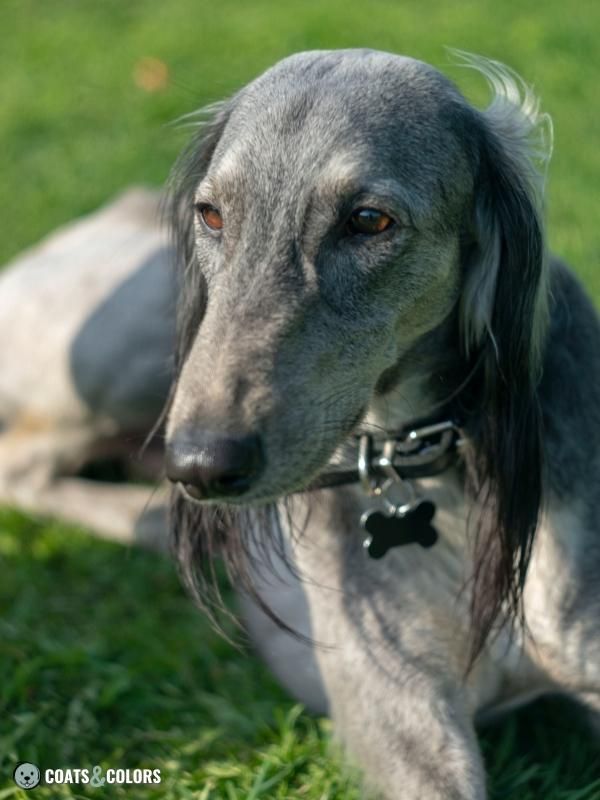
Older studies claimed that domino possibly had no effect on KB[3]. But today we know that this is not true. Some sighthound breeds such as Afghan Hounds regularly produce a dominant black domino phenotype.
Black Dogs: Look-Alikes and Mix-Ups
Of course, there are exceptions to every rule:
- In some dominant black dogs, the normally hidden agouti locus pattern becomes visible to some extent. This “incomplete dominant black” phenotype can produce various ghost tan patterns such as seal.
- A solid dark coat also happens in recessive black dogs. These dogs can express their A locus pattern, the recessive a allele just can’t properly induce yellow pigment. This is common in black German Shepherd Dogs and bi-colored Shelties.
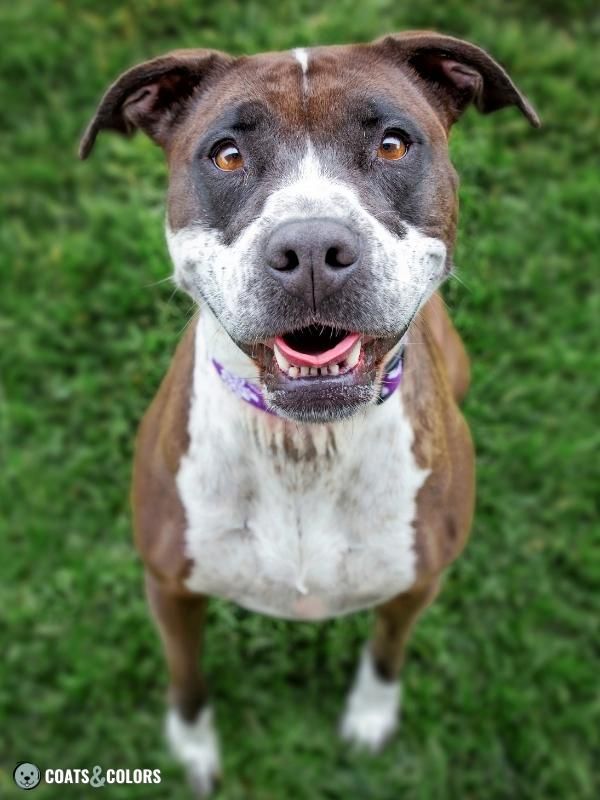

Learn More
Links
[1] Candille SI, Kaelin CB, Cattanach BM, Yu B, Thompson DA, et al. (2007) A beta-defensin mutation causes black coat color in domestic dogs. Science 11(1): 24–30. https://doi.org/10.1126/science.1147880
[2] Dreger DL, Hooser BN, Hughes AM, Ganesan B, Donner J, Anderson H, et al. (2019). True Colors: Commercially-acquired morphological genotypes reveal hidden allele variation among dog breeds, informing both trait ancestry and breed potential. PLoS ONE 14(10): e0223995. https://doi.org/10.1371/journal.pone.0223995
[3] Dayna L. Dreger, Sheila M. Schmutz. A New Mutation in MC1R Explains a Coat Color Phenotype in 2 “Old” Breeds: Saluki and Afghan Hound. Journal of Heredity, Volume 101, Issue 5, September-October 2010, Pages 644–649, https://doi.org/10.1093/jhered/esq061
[4] Ollivier M, Tresset A, Hitte C, Petit C, Hughes S, Gillet B, et al. (2013): Evidence of Coat Color Variation Sheds New Light on Ancient Canids. PLoS ONE 8(10): e75110. https://doi.org/10.1371/journal.pone.0075110
Image Credits
© RosaJay/yayimages.com
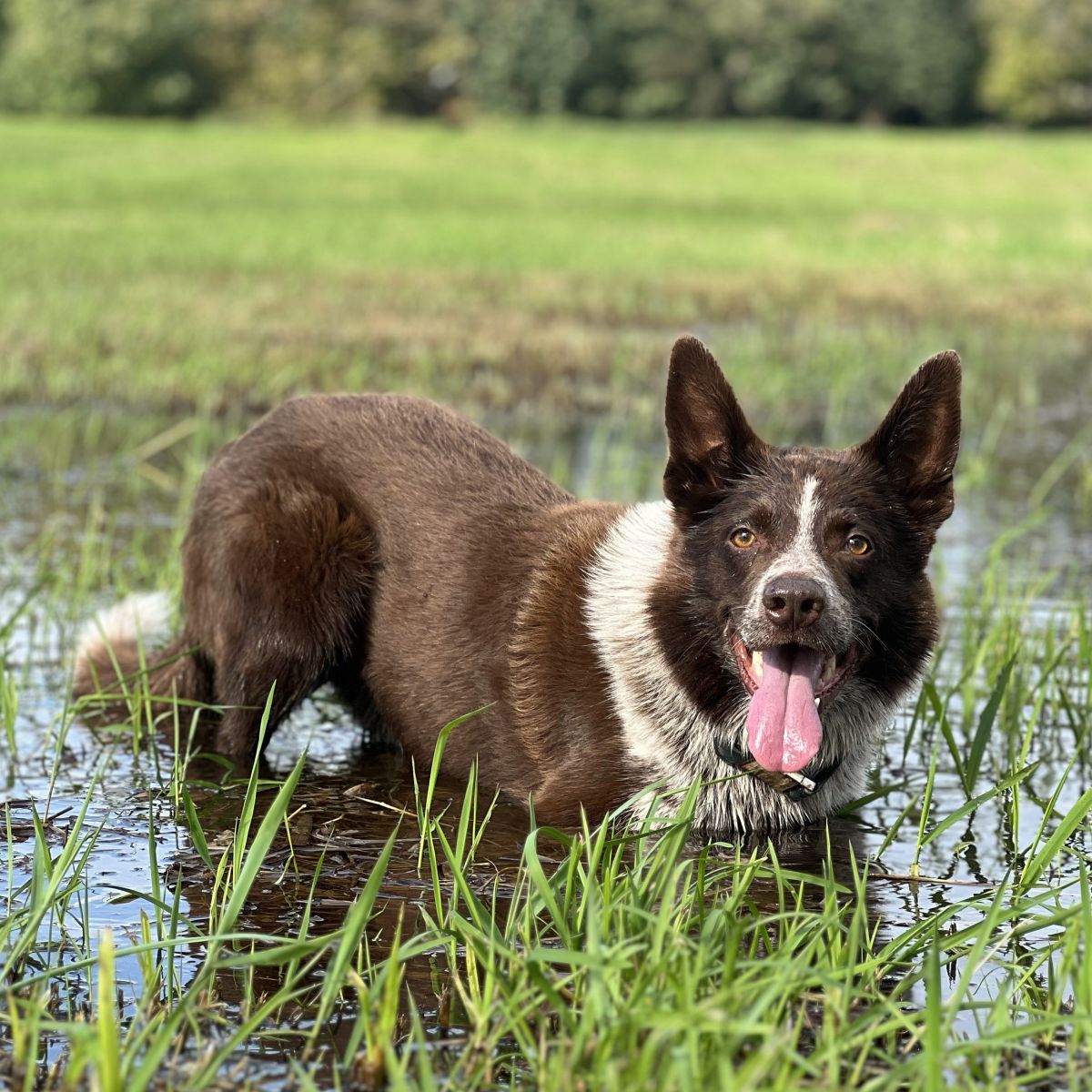
Hi! I’m Steffi. I am a biologist and a big time dog nerd. You are curious about coat color genetics? You’ve come to the right place! Read more.

